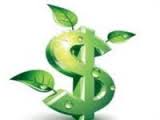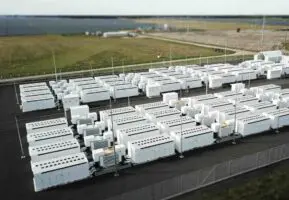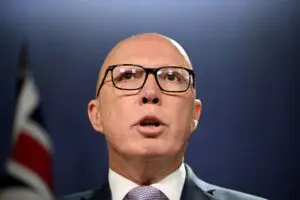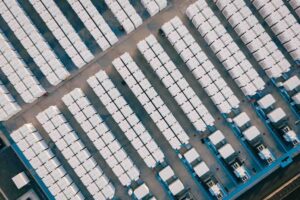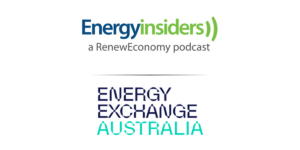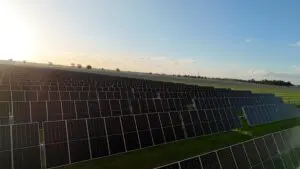The climate bond market has jumped 10-fold in two years to $38 billion. By 2020, it could be worth $1 trillion a year, as wind and solar companies, property investors and local, state and national governments tap soaring demand for clean investments.
It could well be the fastest growing financial market in the world – green bonds. Just three years ago, it was barely visible; a play-thing of a few international development banks.
Last year, the market grew three-fold to $38 billion. By 2020, predicts Sean Kidney, the co-founder of Climate Bonds initiative, the market could be worth more than $1 trillion a single year.
That will go a large way to finding the $46 trillion that the International Energy Agency says is needed to fund the transformation of the world’s energy systems from dirty to clean.
In recent months, developers of large-scale wind and solar projects have been rushing to the new green bond market, as an alternative to the traditional equity and debt markets.
SunEdison recently tapped the market with an $800 million green bond to finance its purchase of First Wind, a deal that makes it the largest renewable energy developer in the world.
Warren Buffett’s Berskshire Hathaway in February was in the market for a $325 million climate bond to fund 579MW of solar projects through SolarStar Funding.
A week earlier, the European Investment Bank tapped the market for a £339.2 million climate bond to help fund the transmission link for Gwynt y Mor, the second biggest offshore wind farm in the world.
Last year, SolarCity issued $200 million of asset-linked retail bonds to help fund the rollout of its rooftop solar leasing model. Its target market was small investors, a market that has been tapped at a smaller level by wind and solar developers in the UK.
US municipals are also tapping the green bond market, and big banks are also making a move. Barclays announced in September that it would invest at least £1 billion equivalent in green bonds over the year. Deutsche Bank is aiming to boost its investment in green bonds from €200 million to over €1 billion. Group treasurer Alexander von zur Muehlen said “green securities” had become viable and prudent liquidity buffer investments.
Citigroup is also investing $100 billion in the green space, although not all of it in green bonds. Michael Eckhart, a Citigroup managing director, predicts the market for green bonds will grow to $100 billion in 2015.
By 2020, Sean Kidney told a forum at the World Energy Future conference in Abu Dhabi in late January, that could spin out to a $1 trillion a year market. “We are going for $100 billion in 2015, for $300 billion in 2018, and $1 trillion in 2020,” he said.
Green bonds are expected to provide a large part of the estimated $100 billion financing needed for India’s push to 165GW of new renewable energy (wind and solar) by 2022. Last month, Yes bank issued the country’s first green bond, an $80 million issue to finance various solar, wind, hydro, biomass, and energy efficiency projects.
In the UK, the Labour party has announced they will ask the UK’s Green Investment Bank to use green retail bonds to finance more solar, wind and other clean energy projects.
In Australia, the market is also emerging. Last December, National Australia Bank (NAB) offered a $150 million bond to help finance $1.5 billion of investments in 17 different wind and solar projects. The raising was doubled to $300 million after strong investment demand.
As we reported then, the NAB bond came hot on the heels of Australia’s first green bond from property group Stockland in November. The World Bank had previously raised $A300 million in the first green bond denominated in Australian dollars.
The Financial Times recently wrote an analysis that suggested green bonds were now attractive to ore investors.
“At least two factors mean green bonds could yet end up outperforming other bonds. The first — negative — reason is that the market’s small size and novelty means liquidity is stickier: green bonds would not be the easiest to sell in a panic. A second — more positive — reason is that green bond owners are likely to be long-term investors holding them to maturity.
“A recent Bank of America Merrill Lynch note argued that green bond prices were not only similar to non-green bonds, they were also “less volatile than counterparts, which may be driven by their perceived safety and longer-term investor base with lower churn rates”.
Another analysis in the markets publication Global Capital said that the “cynics had been silenced” and green bonds had joined the mainstream.
“Whereas a year ago the mention of ‘Green’ or ‘SRI’ tended to bring a roll of the eyes and accusations of hype, fad or window dressing from all but the sector’s most ardent believers, 2014 saw global bond teams swing behind the movement.”

